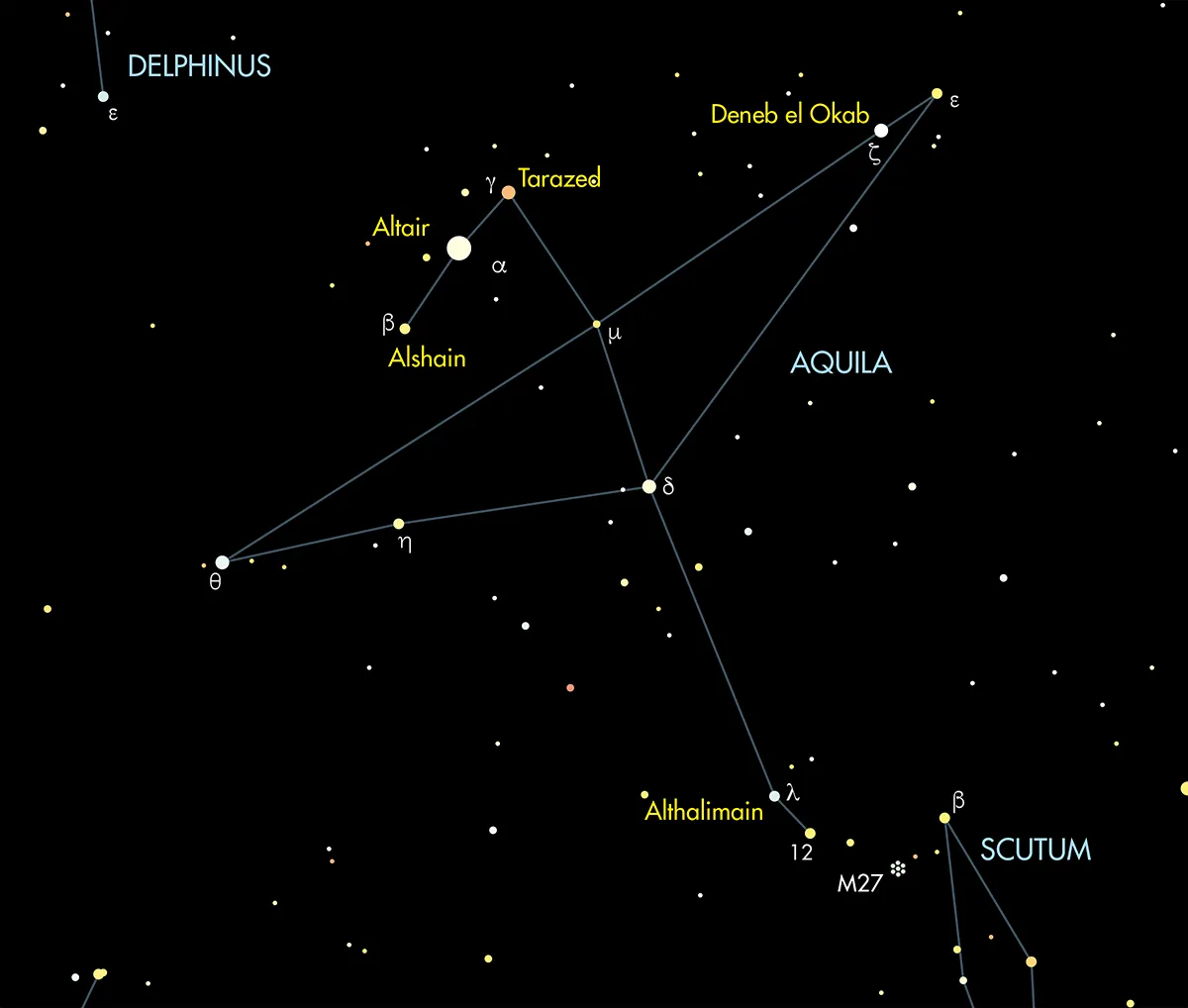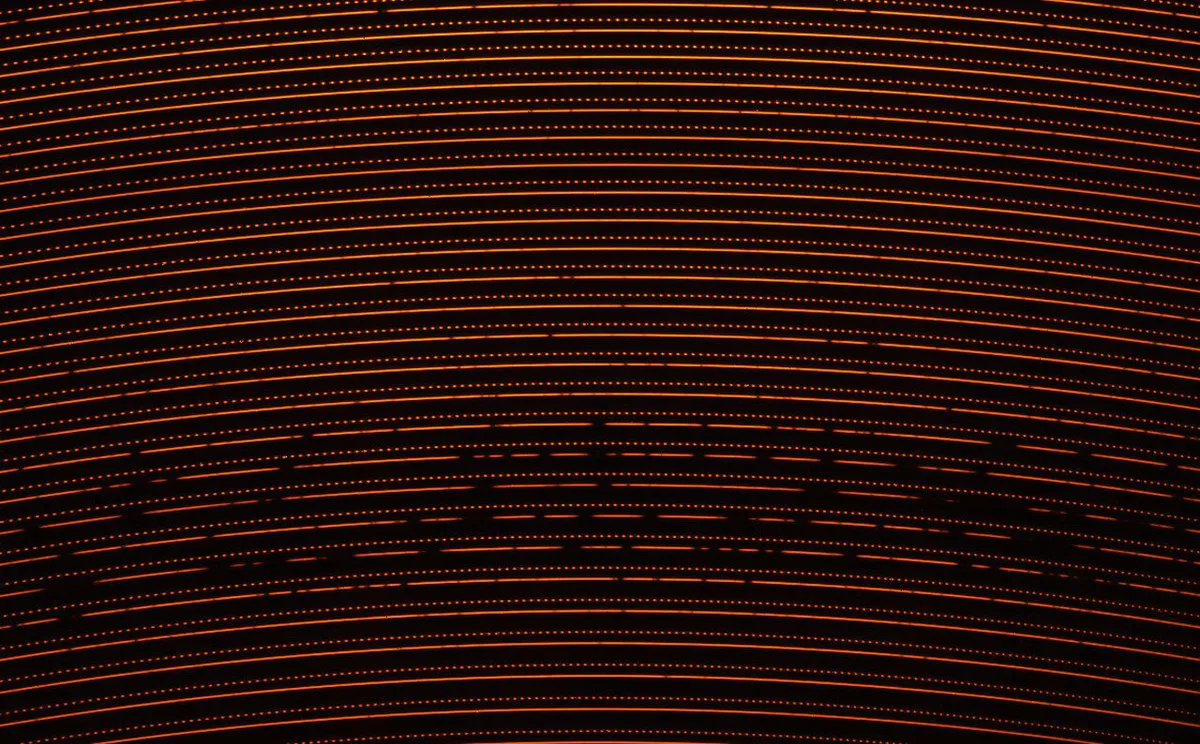Barnard's Star is the closest single star to our Solar System, our Sun and planet Earth.
For this reason, many astronomers and stargazers like to track Barnard's Star down and see what it looks like through a telescope.
Only the triple star system Alpha (a) Centauri is closer, at a distance of 4.39 lightyears.
It is a main-sequence red dwarf with a cool surface temperature of 3,200K (2,900ºC), has roughly one sixth of the Sun’s diameter, 16% of its mass and shines with just 0.04% of its luminosity.
In October 2024, astronomers announced the discovery of Barnard b, a rocky exoplanet orbiting Barnard's Star.

Barnard's star discovery
Barnard's Star is named after Edward Emerson Barnard (1857-1923), an American astronomer whose phenomenally keen eyesight and skill with the telescope led to him becoming one of the greatest observers in history.
In 1888, he became a staff member of the Lick Observatory in California, where he established himself as an accomplished astrophotographer.
With the equipment there, he discovered comets (he’d previously discovered 10 visually) and captured in excess of 4,000 images of the Milky Way.
Barnard’s careful comparison of images taken between 1894 and 1916 revealed a faint star in the constellation of Ophiuchus with a very interesting property.
He observed it moving quickly against the background stars. In fact, over a period of 180 years Barnard's Star traverses a distance equivalent to the diameter of the Moon.
The star’s so-called proper motion is a result of its true motion in space, and a large value is indicative of an object that lies close, astronomically speaking, to our Solar System.
We now know that Barnard’s Star has the largest proper motion of any known stellar body and lies just 5.94 lightyears from Earth.

Locating Barnard's Star in Ophiuchus
Barnard’s Star really is a fascinating object and well worth tracking down, particularly as it is the nearest star to the Sun.
Since it resides in northeastern Ophiuchus, summer is the best time to look for it.
At magnitude +9.5, it is a viable, though faint, 7x50 or 10x50 binocular object from a dark location with Moon-free skies.
It is possible to use the setting circles of an astronomical telescope’s equatorial mount to locate celestial objects.
If you wish to use this method to find Barnard's Star, you will probably find it easiest to offset from Altair in the constellation of Aquila.

Here are the coordinates (2000.0) of both Altair and Barnard’s Star:
Altair
- RA: 19h 50.8m
- Dec: +08° 52’
Barnard’s Star
- RA: 7h 57.8m
- Dec: +04° 40’
You will need to swivel 1h 53m of right ascension to the west of Altair, and 4.2° south in declination to reach Barnard's Star.
If you have a computerised Go To scope, then you simply have to enter the coordinates of Barnard’s Star directly into the instrument’s keypad.

Star-hop to locate Barnard's Star
Our six-step star-hop to find Barnard's Star will take us on a meandering journey starting from the bright, readily identifiable stars Vega and Altair on the western side of the Summer Triangle.
Then we cross the Milky Way, moving one-and-a-half spans of an outstretched hand to the southwest, seeking out the magnitude +2 and +3 stars alpha and beta Ophiuchi.
Then we follow a gentle curve through gamma Ophiuchi, 67 and 66 Ophiuchi.
This last star is the faintest of the group shown on our all-sky chart at magnitude +4.8. It also lies just 0.7° to the southeast of our destination, Barnard’s Star.
If you are an experienced observer, a long-term project to image the star from one year to the next would prove interesting.
Travelling nearly due north at a position angle – its direction relative to celestial north – of 356°, covering 10.3 arcseconds per year, it is possible to use astrometric software to reveal the star’s motion in a matter of weeks.
One further treat awaits advanced CCD practitioners. Careful plotting of several months’ data may reveal a 0.77 arcsecond displacement east or west in March and September.
This demonstrates the star’s parallax as seen from opposing sides of the Earth’s orbit and offers a means to measure the star’s distance for yourself.
If you want to get really crafty, read our guide on how to build a parallax measuring tool.
You can even use Barnard's star to find out what year it is!

What you need to get started
Torch
Preferably a head torch with a red Cellophane filter to preserve dark adaptation, or a small red LED keyring flashlight that you can hold in your teeth – you will need your hands free.
Watch
An accurate watch is an essential tool for astronomers. Not only will you need to time when astronomical events occur, but it’s useful for setting your planisphere and logging observations.
Remember that all your observing records should show the time in 24-hour format, Universal Time (BST minus one hour).
Planisphere
A planisphere is a tremendously useful accessory for planning a night’s viewing session and everyone should have one.
By setting the date and time (remember to take an hour off your watch time when BST is in force) you can see at a glance which stars will be visible for the given instant.
Star charts
A detailed set of star charts complements a planisphere beautifully.
A good star chart should enable you to star-hop to Barnard’s Star, but you may care to explore the surrounding region for its many deep-sky objects and double stars.
A star-hopping guide to finding Barnard’s Star
Find Vega

Brilliant Vega, close to the zenith in the southwest, marks the first stepping-stone of our star-hop.
Within a low-power binocular field (4º) of Vega, on a five o’clock heading, lies magnitude +4.3 kappa Lyrae.
The next step is slightly larger and crosses the border into Hercules, bringing you to a magnitude +5 star known as 104 Herculis.
Keep this heading for a further 2.7º and you arrive at magnitude +3.8 omicron Herculis.
Delta Herculis

Next comes an easy run of naked-eye stars that brings us to delta Herculis.
Starting at omicron Herculis, step just over 2º on a four o’clock heading to find magnitude +3.7 xi Herculis, then jump 3º in a five o’clock direction to find mu Herculis shining at magnitude +3.4.
A further 4º on a four o’clock heading finds magnitude +4.4 lambda Herculis, and extending the line by a similar amount brings us to the brighter delta Herculis.
Rasalhague

Now we have to take a larger jump across Hercules.
Just over 10º – equal to the span of a fist held at arm's length – from delta Herculis on a seven o’clock heading is magnitude +3.3 alpha Herculis, a beautiful double star shown on our all-sky chart as Rasalgethi.
Next, sidestep a binoculars’ field of view (4º) to the left to cross the border into Ophiuchus.
This brings you to magnitude +2.1 alpha Ophiuchi, otherwise known as Rasalhague.
Final approach

Rasalhague marks the start of the final approach to Barnard’s Star.
An 8º hop on a 7 o’clock heading brings us to magnitude +2.7 beta Ophiuchi.
Extend this line for a quarter of the distance just travelled and you will arrive at the magnitude +3.7 gamma Ophiuchi.
Turning now through almost a right angle to take a 10 o’clock heading, move a 3º step to 67 Ophiuchi, a star shining at magnitude +3.9.
66 Ophiuchi

This penultimate step involves a change of scale to zoom in on the target area.
If you arrived here using the setting circles on an equatorial mount or by keying the coordinates into a computerised Go To handset, use the detailed chart to confirm that you are in the right place. Just over 1º away from 67 Ophiuchi on a one o’clock heading lies 66 Ophiuchi.
This magnitude +4.8 star is the nearest naked-eye object to Barnard’s Star.
Barnard’s Star

Our final location chart shows stars down to magnitude +10, slightly below the threshold for Barnard’s Star itself.
If you have a four-inch (10cm) telescope or larger, then you will see many more stars than are shown here, but the overall pattern will remain the same.
For binocular users, our magnitude +9.5 target lies just 0.7º away from 66 Ophiuchi in the two o’clock position.
Well done, you’ve made it, enjoy the view!
If you've managed to find or photograph Barnard's Star, share your observations and images with us by emailing contactus@skyatnightmagazine.com